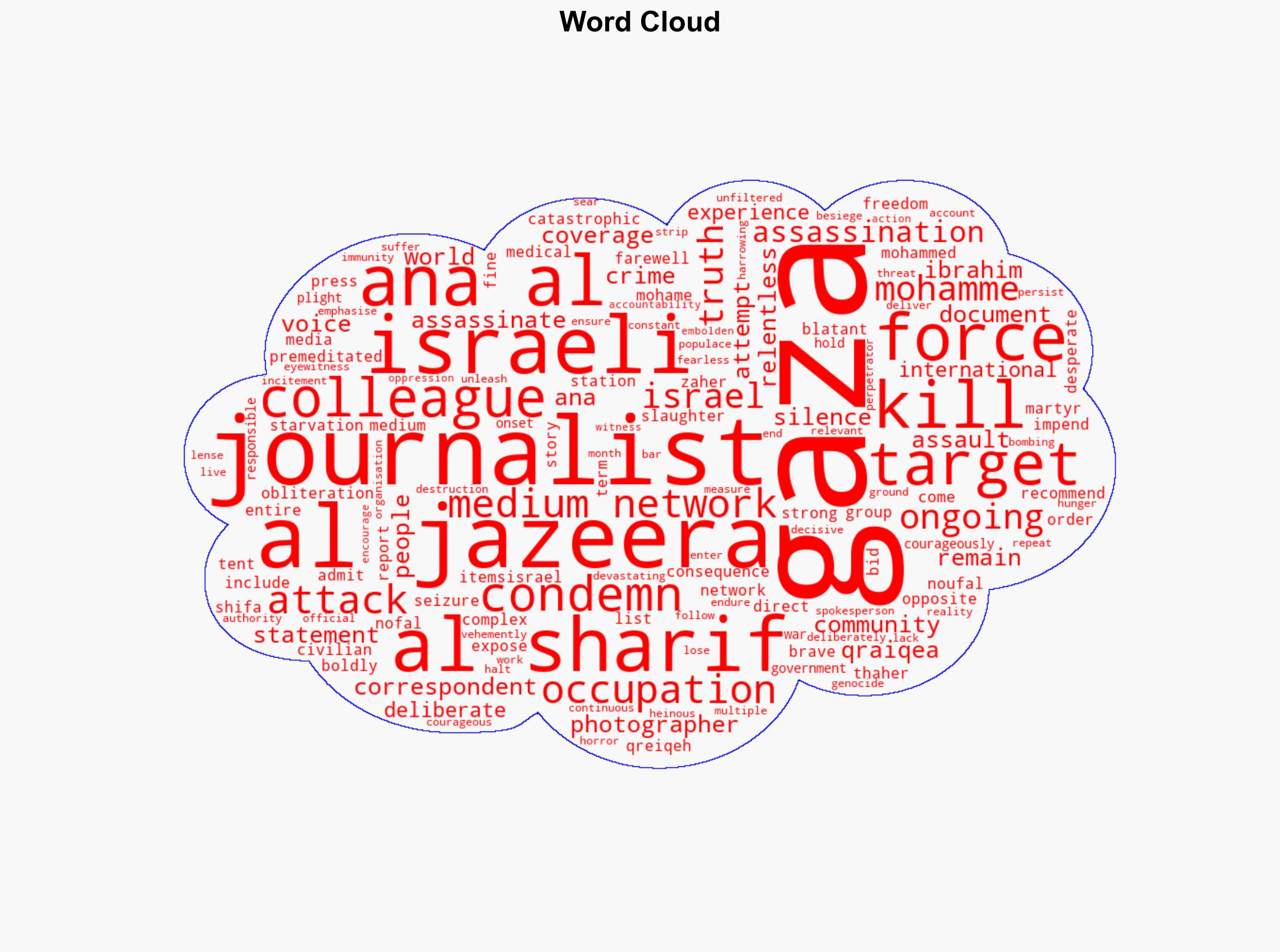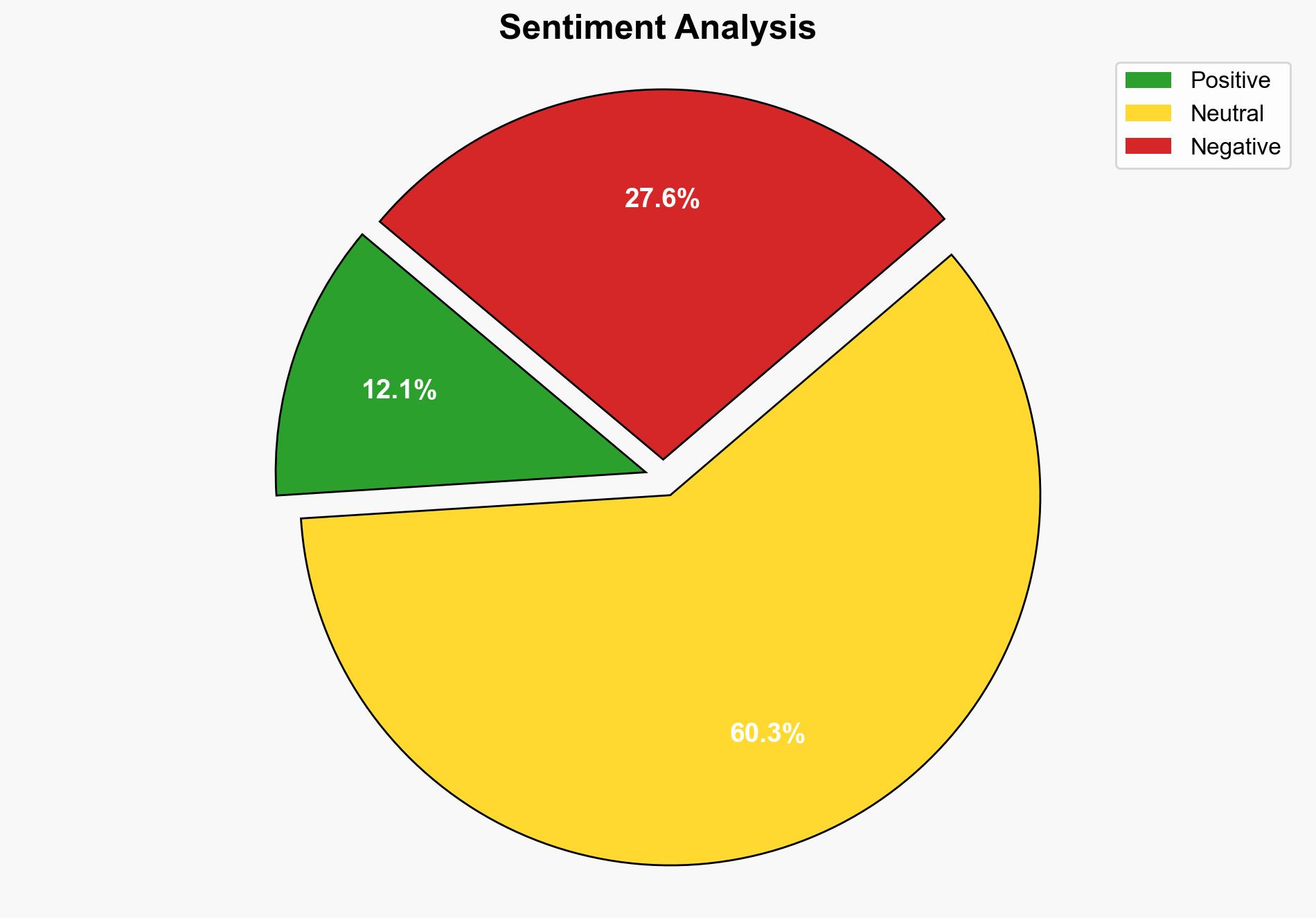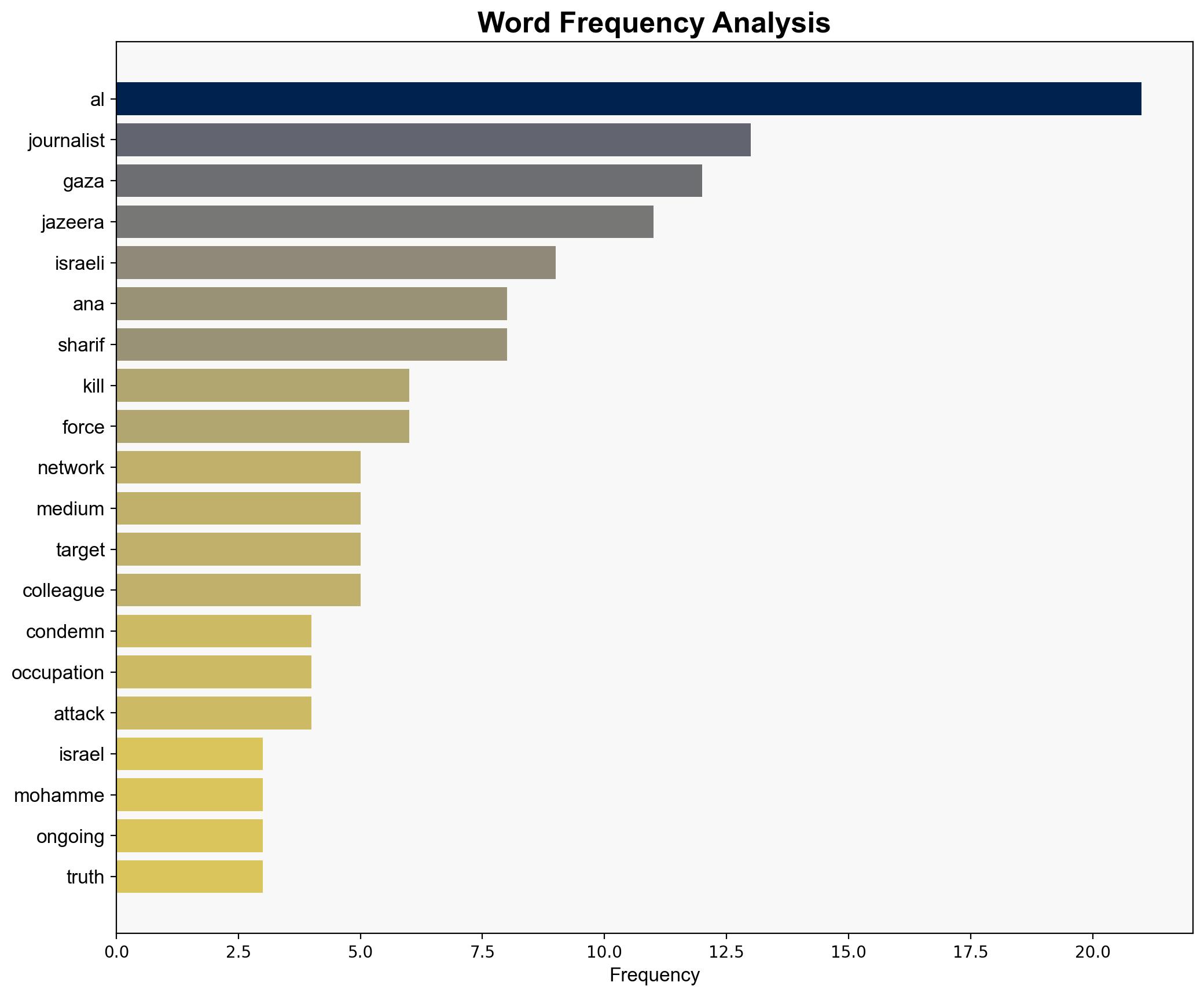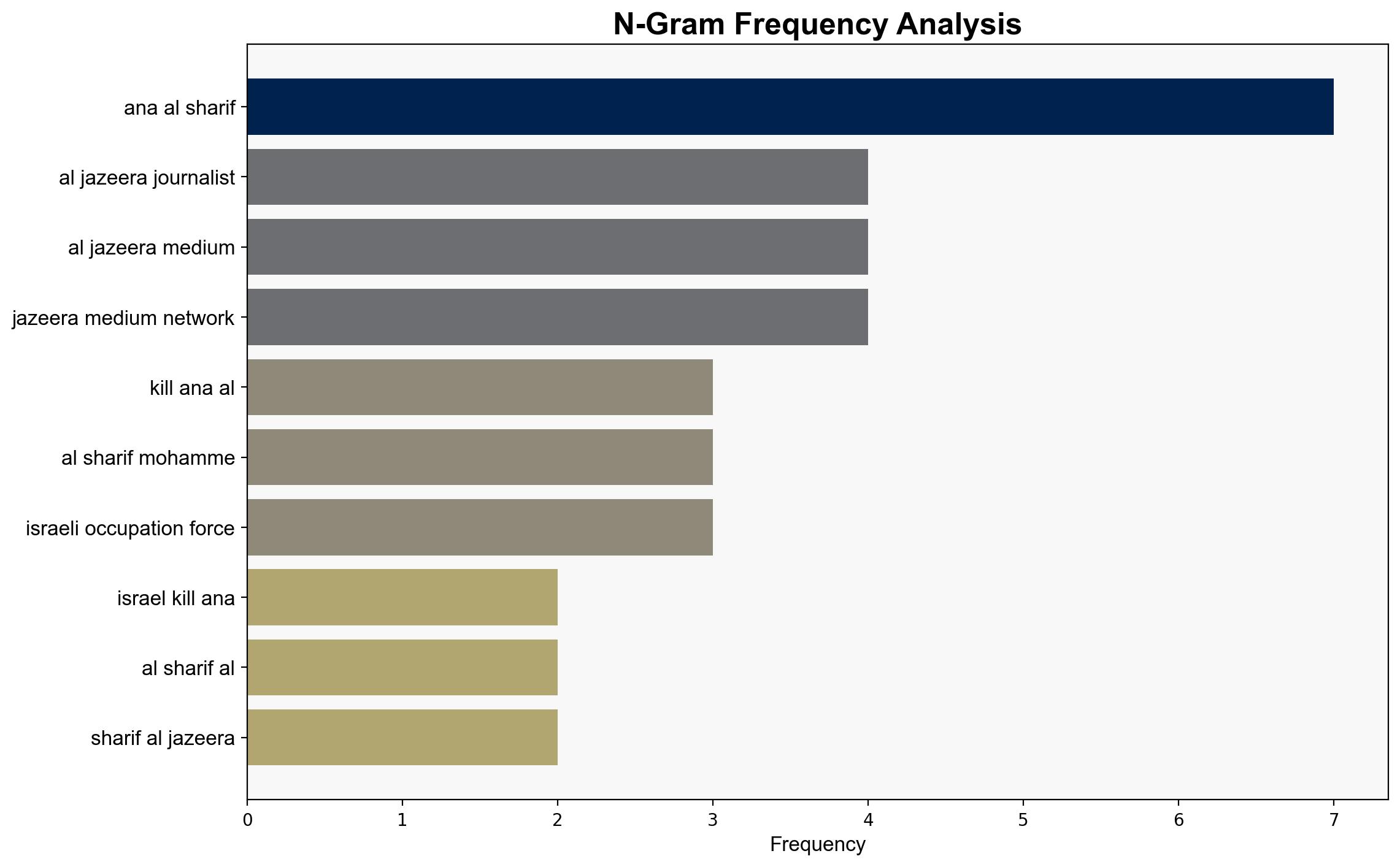Al Jazeera condemns killing of its journalists by Israeli forces in Gaza – Al Jazeera English
Published on: 2025-08-11
Intelligence Report: Al Jazeera condemns killing of its journalists by Israeli forces in Gaza – Al Jazeera English
1. BLUF (Bottom Line Up Front)
The most supported hypothesis is that Israeli forces deliberately targeted Al Jazeera journalists to suppress coverage of the Gaza conflict. This conclusion is drawn from the structured analysis of available intelligence, including statements from Al Jazeera and the context of ongoing hostilities. Confidence in this hypothesis is moderate due to the lack of independent verification and potential biases in reporting. Recommended action includes advocating for an independent international investigation to ascertain the facts and hold accountable those responsible for targeting journalists.
2. Competing Hypotheses
1. **Deliberate Targeting Hypothesis**: Israeli forces intentionally targeted Al Jazeera journalists to suppress unfavorable media coverage and control the narrative of the Gaza conflict.
2. **Collateral Damage Hypothesis**: The journalists were unintended casualties in a broader military operation, with no specific targeting by Israeli forces.
Using the Analysis of Competing Hypotheses (ACH) 2.0, the deliberate targeting hypothesis is better supported by the explicit statements from Al Jazeera and the context of repeated incidents involving journalists. However, the collateral damage hypothesis cannot be entirely dismissed due to the chaotic nature of conflict zones.
3. Key Assumptions and Red Flags
– **Assumptions**: The deliberate targeting hypothesis assumes that Israeli forces have a strategic interest in silencing media coverage and that Al Jazeera’s reports are accurate and unbiased.
– **Red Flags**: Potential bias in Al Jazeera’s reporting, lack of independent verification, and the possibility of misinformation or propaganda from both sides.
– **Blind Spots**: Absence of direct evidence from third-party observers or international bodies that could corroborate or refute the claims.
4. Implications and Strategic Risks
– **Escalation**: Targeting journalists could lead to increased international condemnation and pressure on Israel, potentially escalating diplomatic tensions.
– **Media Freedom**: Continued targeting of journalists may deter media coverage, impacting global awareness and response to the conflict.
– **Geopolitical**: Strained relations between Israel and countries advocating for press freedom could result in diplomatic fallout or sanctions.
5. Recommendations and Outlook
- Advocate for an independent international investigation to establish facts and accountability.
- Encourage media organizations to implement enhanced safety protocols for journalists in conflict zones.
- Scenario Projections:
- Best Case: International investigation leads to accountability and improved protections for journalists.
- Worst Case: Continued targeting of journalists leads to reduced media presence and increased human rights violations.
- Most Likely: Ongoing international pressure results in temporary de-escalation but no long-term resolution.
6. Key Individuals and Entities
– Ana Al Sharif
– Mohamme Qreiqeh
– Ibrahim Zaher
– Mohammed Noufal
7. Thematic Tags
national security threats, media freedom, geopolitical tensions, conflict reporting





